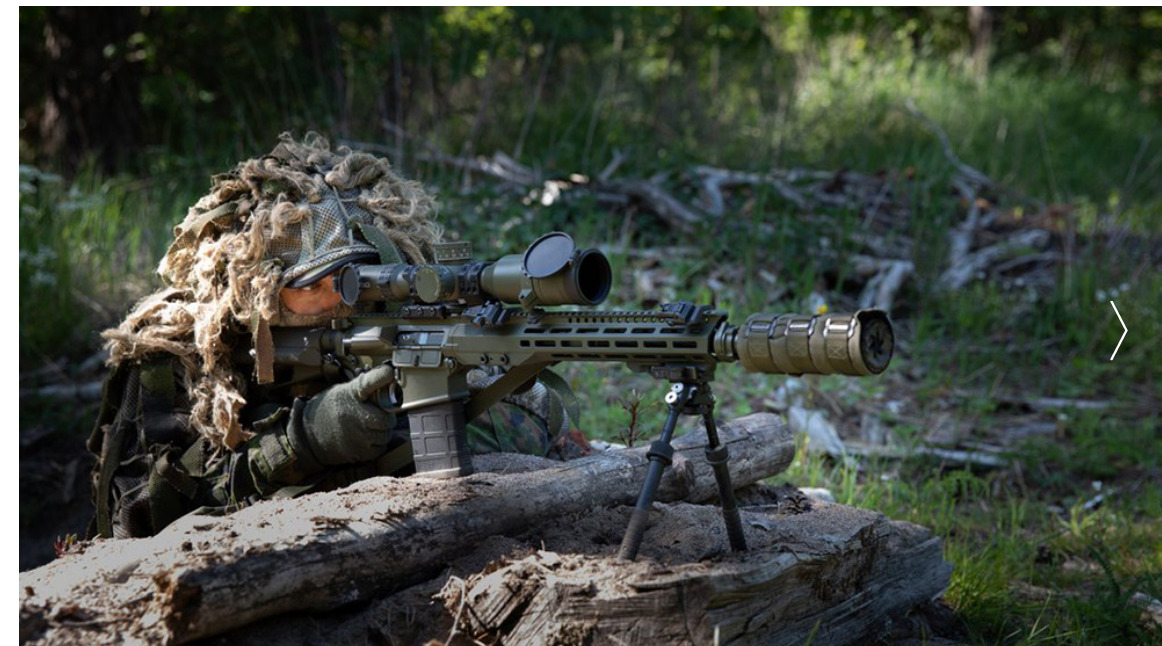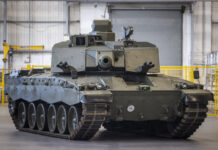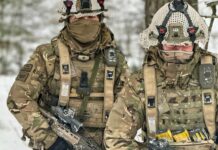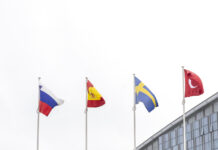There has never been a consistent approach towards sniping. Is it an essential capability worthy of significant investment, or is it just useful to have, but not particularly influential?
What is clear is that developments in weapons, ammunition and sighting systems have given the modern sniper the ability to acquire and engage targets at extended ranges day and night. In addition, the mission parameters of the modern sniper have increased, and the anti-materiel mission has now joined the anti-personnel mission. The march of technology has provided all sorts of possibilities to be included into the mission of the sniper.
The question of how much to invest in a high quality sniper capability is not a new one, with the question of performance and utility versus price always an issue. The Whitworth rifle of the 1860s had many of the characteristics of a modern sniper system. It was accurate, allowed extended range engagements, and was fitted with a telescopic sight. On the other hand, it was craftsman-built, expensive and used non-standard ammunition. Even though it was demonstrably effective in the American Civil War, when used by the ‘sharpshooters’ of the day, it was never acquired in significant numbers. It should be thought of as the genesis of the modern sniper rifle, but it never established a trend towards a calculated and resourced sniping capability.
The re-emergence of sniping would come many years later, but would not see the acquisition of specific sniper systems, as it was usually a case of adapting existing equipment for the sniper role. The starting point was the human factor, and in this case, selecting the sniper. Fundamental to the basic training of the soldier was marksmanship; those who excelled in this area provided the pool of candidates for role-specific sniper training and those who made it through sniper selection were high-quality shooters.
With the people side of the equation resolved, what of the equipment to be used? The weapon would be the standard infantry rifle, with the most accurate rifles put to one side for the sniper role. These would be worked on to improve shooting characteristics and accuracy, and then paired with a telescopic sight, before match-grade ammunition was finally issued.
The Need for Change
Ironically, the next stage in sniping evolution could well be seen as a case of history repeating itself. The aforementioned Whitworth rifle was equally at home as a rifle for competition shooting as it was for military applications. The British Army would replace its elderly L42A1 sniper rifle with the Accuracy International (AI) L96A1 in 7.62 × 51 mm, equipped with a Schmidt & Bender PM 6×42 (L13A1) telescopic sight. The basis of the AI design came from the world of competition shooting and, as time went on, AI would become one of the most influential forces in sniper rifle design and evolution.
Advanced designs, new materials and, arguably, a greater understanding of the operational possibilities that could be obtained from developments in sniper rifles triggered a wave of advances. Amongst these were that sniper systems were no longer limited to the 7.62 × 51 mm calibre, as new mission requirements arose and to meet those, new calibres emerged.

An understanding of the current state of the sniping environment, at least in Europe, can be gained from a recent set of acquisition programmes in two NATO member countries and Sweden, soon due to be a NATO member. Sweden, has increasingly been coordinating defence acquisition programmes with Finland. In late March 2023, the Finnish Defence Forces Logistics Command, the Swedish Defence Materiel Administration (FMV) and Finnish small arms company Sako Ltd, part of the Beretta Group, signed a framework agreement, under which Sweden will acquire a range of small arms from Sako.
The existing Automatkarbin 4 (AK4) 7.62 × 51 mm battle rifle, a locally manufactured Heckler & Koch G3, is to be replaced by a Sako assault rifle in 7.62 × 51 mm, while the Automatkarbin 5, a locally manufactured FN FNC in 5.56 × 45 mm, is to be replaced by a Sako weapon in the same calibre. Both Sako weapons are based on the M23 platform, utilising the AR operating system. The Prickskyttegevär (Psg 90) is the AI Arctic Warfare (AW) sniper rifle in 7.62 × 51 mm; over 1,000 weapons were acquired since the start of the 1990s. This weapon is set to be replaced by the Sako TRG M10, a modular multi-calibre system, with the operator able to change the barrel rapidly and utilise a new calibre within minutes. Sweden is acquiring the system in 7.62 × 51 mm and in .338 Lapua Magnum (8.6 × 70 mm). The M10 will be delivered in 2024 and the AK5 replacement in 2025, with the AK4 replacement to arrive thereafter.
Other sniper systems in service with Sweden include the Automatgevär 90 (Ag 90), which is the Barrett M82A1 in .50 BMG (12.7 × 99 mm NATO), with the first order for 100 weapons being placed already in 1989. In early June, it was announced that Sweden would supply an unspecified number of Ag 90 rifles and associated ammunition to Ukraine. Sweden intends to field a replacement for the Ag 90 in 12.7 × 99 mm calibre. Swedish Special Forces also currently operate the Sako TRG-42 sniper system.
Baltic Sniping
In February, Finland announced that it was refreshing its own sniper capabilities, placing an EUR 11 M order with Sako for TRG M10 rifles in .338 Lapua Magnum (8.6 × 70 mm) and 7.62 × 51 mm, spare parts and associated equipment. Prior to that, they had selected the Sako M23 in 7.62 × 51 mm to meet Designated Marksman Rifle (DMR) requirements as the KIV 23 and sniper requirements as the TKIV 23. These weapons will replace the SVD Dragunov and the TRG-85, both of which are chambered in 7.62 × 54R mmR. The TKIV 23 has a Steiner M7XI 2.9-20×50 scope on a Spuhr mount and a suppressor from Ase Utra in Finland. By contrast, the KIV 23 DMR, mounts a Trijicon VCOG 1-6×24 optic. Canada adopted the TRG M10 in .338 Lapua Magnum/7.62 × 51 mm in 2022 for its multi-calibre sniper weapon (MCSW) programme, with 224 rifles to be acquired.

Elsewhere in the Baltics, there have been more sniper capability acquisitions. In late April 2023, the Estonian Centre for Defence Investments (ECDI) signed a framework contract for the acquisition of the TRG M10 in .338 Lapua Magnum for the Estonian Defence Forces and Defence League. The framework contract will run for seven years and is valued at EUR 40 M, with deliveries due in 2024. The ECDI noted that their evaluation included sniper systems from Sako, Haenel, Unique Alpine, and Desert Tech. The M10 will replace the Sako TRG-42 in .338 Lapua Magnum in Estonian service.
Lithuania selected its future sniper rifle in 2016 opting for the AXMC multi-calibre rifle from AI. The weapon can operate with .338 Lapua Magnum, 7.62 × 67 mm (.300 Winchester Magnum) or 7.62 × 51 mm; Lithuania chose the .338 Lapua Magnum for its application. The sight chosen for the Lithuanian AXMC was sourced from Kahles in Austria. Latvia also has the AXMC and other AI weapons, and they have also purchased the PGM Hécate II in 12.7 × 99 mm from France for anti-materiel applications.
This quick description of the sniping situation around the Baltics shows a number of important trends. The .338 Lapua Magnum round continues to be highly successful in anti-personnel applications; multi-calibre weapons back up that round with the 7.62 × 51 mm for less demanding environments and as a lower cost solution for training, while the 12.7 × 99 mm round is still dominant in the anti-materiel domain.
Within the overall sniping environment, one should not forget the growing importance of the DMR. The crux of the matter is the performance level that operators are prepared to demand from their DMR. For example, in 2013 Lithuania adopted the FN SCAR-H PR in 7.62 × 51 mm as their DMR with a Schmidt & Bender optic. In 2019, France also adopted the SCAR-H PR as their DMR weapon; the sight is a Schmidt & Bender 1-8×24 PMII, with a PGM Precision bipod and a B&T suppressor from Switzerland.
If you compare what France has specified on its DMR compared to the situation in Finland, the French capability is much closer to the TKIV 23 sniper system than the KIV 23 DMR. However, the solution adopted by Finland is similar to that chosen by the British Army for its DMR, the L129A1, a version of the LM Defense LW308 Modular Weapon System (MWS); for the DMR role, it is fitted with the Trijicon 6×48 ACOG. Then another more challenging requirement emerged, known as the Sniper Support Weapon (SSW), designed to equip the spotter in the two-person sniper team. Britain’s solution for SSW was the L129A1 mounting a Schmidt & Bender L17A2 3-12×50 scope, with a SureFire SOCOM suppressor.

Competition shooting, hunting and specialised sniping requirements, often from Special Forces, have created a situation where a military user can look to acquire a whole host of sniper rifle solutions. On the ammunition front, as discussed, there are plenty of different rounds to consider. Indeed, more exotic options could even be considered, for example the .408 Cheyenne Tactical (Cheytac; 10.36 × 77 mm) round. It is larger than the Lapua Magnum round, with far higher muzzle velocity and muzzle energy. To add to the exotica, the Russian Lobaev SVLK-14S Twilight sniper rifle can be chambered in either .408 Cheytac or .375 Cheytac (9.5 × 77mm). Lobaev is a small private company, and its rifles has been acquired by the Russian Armed Forces, with the aforementioned SVLK-14S, as well as the TSVL-8 M1 Stalingrad (offered in .338 Lapua Magnum or .300 Winchester Magnum), and DXL-4 Sevastopol (offered in .408 Cheytac or .375 Cheytac) having reportedly been used in Ukraine. In the final analysis, there remains an abundance of choice in terms of weapons, ammunition and sights for sniping requirements.
David Saw












